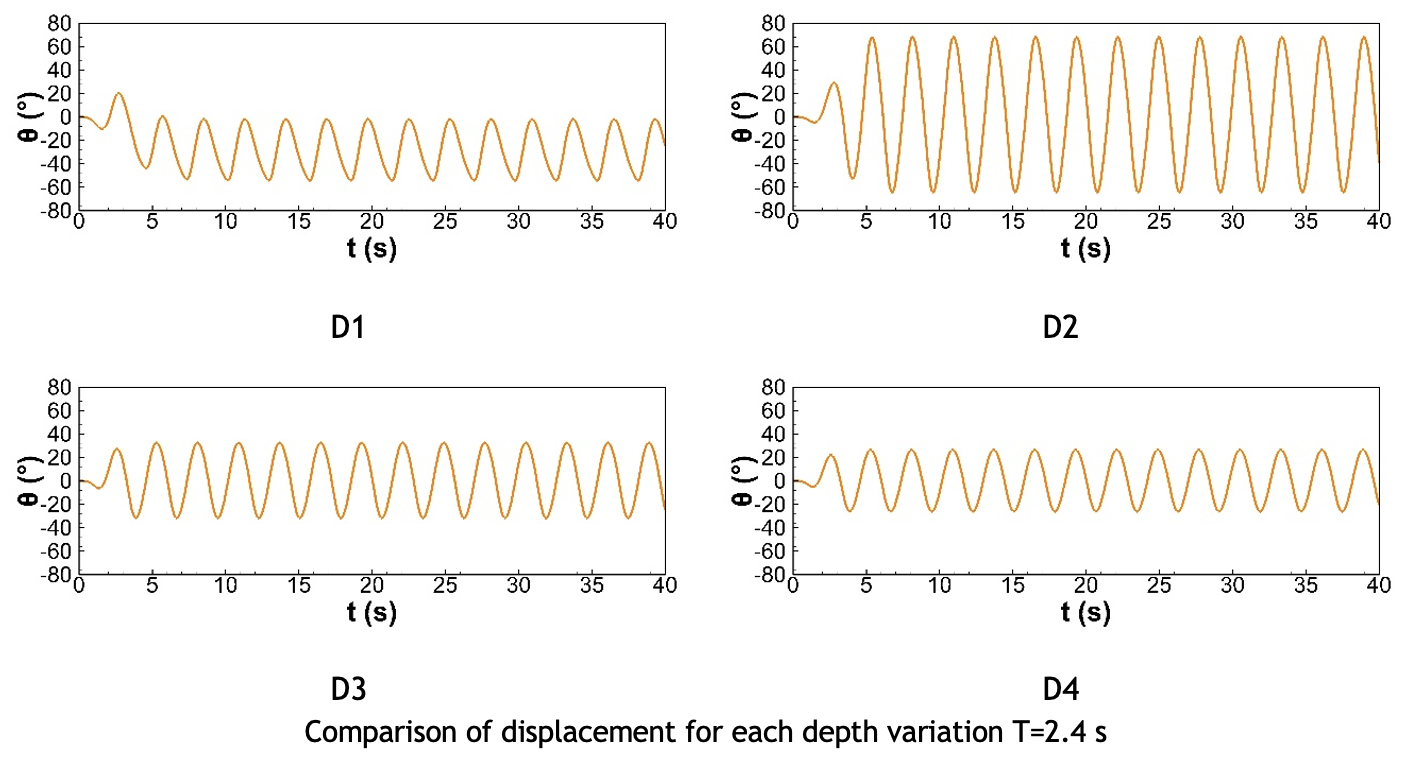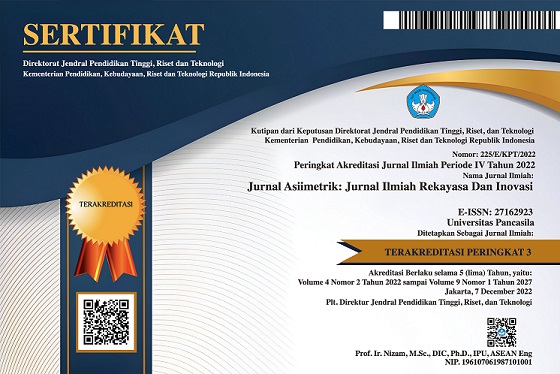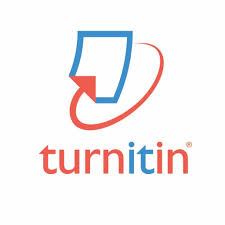The Effect of Hydrostatic Pressure on the Performance of Oscillating Wave Surge Converter
DOI:
https://doi.org/10.35814/asiimetrik.v7i1.7912Keywords:
Oscillating wave surge converter, depth, boundary element methodAbstract
The latest energy demand increasingly drives innovation in ocean wave energy technology, including the Oscillating Wave Surge Converter (OWSC). This consider analyzes the impact of water profundity varieties on the execution of OWSCs put on the seabed. The study was conducted numerically using the Boundary Element Method by testing four variations of air depth at wave periods between 1.2 and 2.8 seconds and wave amplitudes of 0.1 meters. The results show that the optimal depth, equivalent to the flap height (D2), produces the highest maximum displacement due to the balance between hydrostatic pressure and wave energy the flap receives. Conversely, depths that are too shallow (D1) or too deep (D4) result in smaller displacements due to the instability of the movement in shallow air and the attenuation of wave energy in deep air. In addition, more extended wave periods tend to decrease the changing cycle frequency but increase the symmetry of the flap movement at a certain depth.
Downloads
References
Bertram, D.V. et al. (2020) ‘A Systematic Approach For Selecting Suitable Wave Energy Converters For Potential Wave Energy Farm Sites’, Renewable and Sustainable Energy Reviews, 132, p. 110011. Available at: https://doi.org/10.1016/j.rser.2020.110011.
Cheng, Y. et al. (2020) ‘Fully Nonlinear Investigations On Performance Of An OWSC (Oscillating Wave Surge Converter) In 3D (Three-Dimensional) Open Water’, Energy, 210, p. 118526. Available at: https://doi.org/10.1016/j.energy.2020.118526.
Cheng, Y. et al. (2021) ‘Wave Energy Extraction For An Array Of Dual-Oscillating Wave Surge Converter With Different Layouts’, Applied Energy, 292, p. 116899. Available at: https://doi.org/10.1016/j.apenergy.2021.116899
Constant, C. et al. (2021) ‘Accelerating Ocean-Based Renewable Energy Educational Opportunities To Achieve A Clean Energy Future’, Progress in Energy, 3(4), p. 042002. Available at: https://doi.org/10.1088/2516-1083/ac1509.
Cui, J., Chen, X. and Dai, S. (2023) ‘Numerical Study On Dual Oscillating Wave Surge Converter With Different Cross-Section Shapes Using SPH Under Regular Waves’, Ocean Engineering, 271, p. 113755. Available at: https://doi.org/10.1016/j.oceaneng.2023.113755
Garrison, T. and Ellis, R. (2022) Oceanography: An Invitation to Marine Science. USA. Cengage Learning. [Print].
Gunawardane, S.D.G.S.P., Folley, M. and Kankanamge, C.J. (2019) ‘Analysis Of The Hydrodynamics Of Four Different Oscillating Wave Surge Converter Concepts’, Renewable Energy, 130, pp. 843–852. Available at: https://doi.org/10.1016/j.renene.2018.06.115.
Julian, J. et al. (2024) ‘Study Of Hydrodynamic Characteristics In Oscillating Wave Surge Converter’, Jurnal Polimesin, 22(2), pp. 158–164. Available at: https://doi.org/10.30811/jpl.v22i2.4715.
Liu, Y. et al. (2022) ‘Nonlinear Hydrodynamic Analysis And Optimization Of Oscillating Wave Surge Converters Under Irregular Waves’, Ocean Engineering, 250, p. 110888. Available at: https://doi.org/10.1016/j.oceaneng.2022.110888
Qu, K. et al. (2022) ‘Numerical Study on Hydrodynamics of Submerged Permeable Breakwater under Impacts of Focused Wave Groups Using a Nonhydrostatic Wave Model’, Journal of Marine Science and Engineering, 10(11), p. 1618. Available at: https://doi.org/10.3390/jmse10111618.
Rahman, M. (1995) Water Waves: Relating Modern Theory to Advanced Engineering Applications. USA. Clarendon Press. [Print].
Roache, P.J. (1994) ‘Perspective: A Method for Uniform Reporting of Grid Refinement Studies’, Journal Fluids of Engineering, 116(3), pp. 405–413. Available at: https://doi.org/doi.org/10.1115/1.2910291.
Toffoli, A. and Bitner-Gregersen, E.M. (2017) ‘Types of Ocean Surface Waves, Wave Classification’, in Encyclopedia of Maritime and Offshore Engineering. John Wiley & Sons, Ltd, pp. 1–8. Available at: https://doi.org/10.1002/9781118476406.emoe077.
Tongphong, W. et al. (2021) ‘A Study On The Design And Performance Of Moduleraft Wave Energy Converter’, Renewable Energy, 163, pp. 649–673. Available at: https://doi.org/10.1016/j.renene.2020.08.130.
Wei, Y. et al. (2016) ‘Wave Interaction With An Oscillating Wave Surge Converter. Part II: Slamming’, Ocean Engineering, 113, pp. 319–334. Available at: https://doi.org/10.1016/j.oceaneng.2015.12.041
Wilberforce, T. et al. (2019) ‘Overview Of Ocean Power Technology’, Energy, 175, pp. 165–181. Available at: https://doi.org/10.1016/j.energy.2019.03.068.
Zhang, Y., Zhu, W. and Cheng, X. (2023) ‘Wave Power Extraction Of Flap-Type Wave Energy Converter Array Mounted At The Stepped Bottom Topography’, Renewable Energy, 218, p. 119334. Available at: https://doi.org/10.1016/j.renene.2023.119334.





























